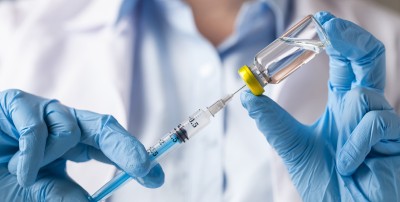
NOTE: The following information was published Dec. 23, 2020. For current information, visit LVHN.org/vaccines.
Over the past three months, LVHN has vaccinated colleagues and community members through our participation in the Pfizer COVID-19 vaccine clinical trial. Now that the vaccine has received Emergency Use Authorization (EUA) from the U.S. Food and Drug Administration (FDA), even more colleagues and eventually community members can receive the vaccine, and we began vaccinating our first front-line colleagues this week under EUA. Data shows that Pfizer’s COVID-19 vaccine is 95 percent effective in preventing COVID-19 in participants without evidence of prior SARS-CoV-2 infection. Moderna’s vaccine received EUA this week after showing that its vaccine is 94.5 percent effective.
Science can’t be rushed
In order for any drug to be approved, it must go through the same 3-4-phases of clinical trials and a COVID-19 vaccine is no different. What is different is that the administrative aspects of the trial, production of the vaccine and distribution were expedited. Typically, the phases of a trial occur sequentially, but with COVID-19 treatments and vaccinations researchers planned the next phase of the trial before the current phase concluded.
“The science will take as much time as the science needs,” says Joseph Yozviak, DO, LVHN Principal Investigator for the COVID-19 vaccine clinical trial. “The only things eliminated from the trial were unnecessary delays.” The standard clinical trial process includes:
-
Phase 1 – During this phase clinical trials enroll healthy volunteers. In this phase, various doses of a vaccine and various versions of a vaccine are given to different volunteers. The vaccine is evaluated to see if any participants develop antibodies and to see which versions perform the best. It also is examined for safety. Once the vaccine shows indications of effectiveness and safety, the vaccine is moved to phase 2.
-
Phase 2 – During this phase a larger number of volunteers are enrolled, and the type of vaccine and dosage is narrowed down even more to learn the best version. Once that information is gathered, the best version will be used to move forward with a single dose of a single vaccine in phase 3.
-
Phase 3 – During phase 3, trials enroll even more participants. This phase further verifies the efficacy of the vaccine and gathers additional safety information.
During FDA review for EUA, the FDA determines if there is enough information to prove that the vaccine is working and that it’s safe – just like any other vaccine. Most side effects of a vaccination are seen in the first two months after it is received, however these clinical trials will continue to monitor participants for two years.
-
Next steps – When the phases are complete, the FDA can consider it for approval for general use. With non-COVID-19-related drugs, it is not uncommon for it to take a year or so after phase 3 has completed before the FDA is able to make a decision about approval. Avoiding delays in reviewing trial data is one of the administrative processes that has been sped up especially for COVID-19 treatments.
Typically, manufacturing begins after FDA approval is received, however many of the manufacturers of a COVID-19 vaccine started production early to ensure distribution occurred quickly after EUA approval.
- Phase 4 – After a vaccine is approved for general use, it may enter phase 4. This phase consists of ongoing surveillance to observe how the vaccine performs in everyday scenarios.
“It's OK to have questions,” says Yozviak. “But I can assure you that the FDA does not issue an Emergency Use Authorization or approve vaccines without data proving that this vaccine is safe and effective.”
A vaccine like no other
There’s something very unique about the Moderna and Pfizer COVID-19 vaccines – they are made with RNA.
The vaccines we’re used to either contain a weak version of the virus (like for measles or mumps) or a killed virus (like for the flu). The vaccination injects the dead or weakened virus into your body to stimulate your immune response.
Pfizer and Moderna are the only two companies that have produced a SARS-CoV-2 RNA vaccine for COVID-19 thus far. “The RNA in these vaccines are modified copies of the same part of the genetic material from the virus. It’s basically a small set of instructions that your body’s cells will use to build the virus’s spike protein, not the whole virus,” says Yozviak. “Our immune system will still respond to the spike protein as foreign and produce antibodies.”
One other important thing to note: “This RNA does not become a part of us. It does not integrate into our DNA.”
